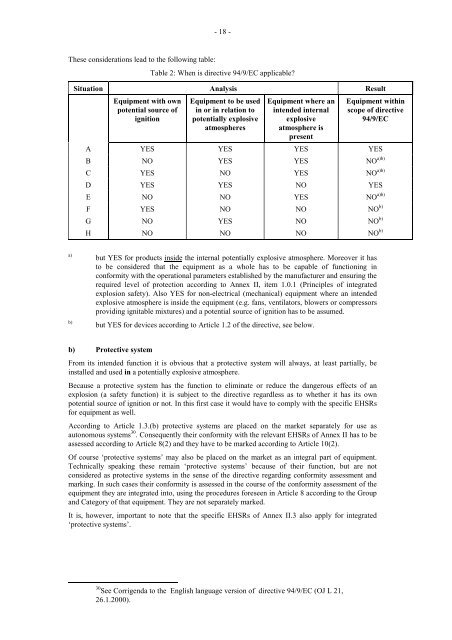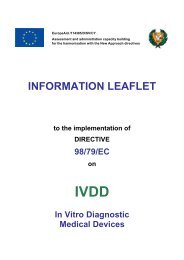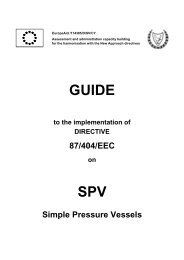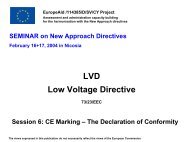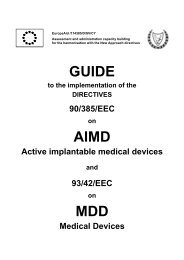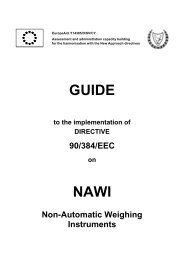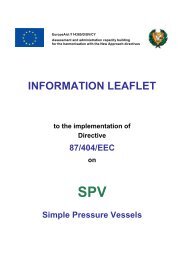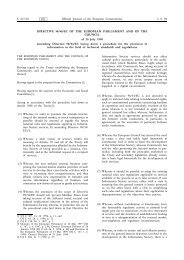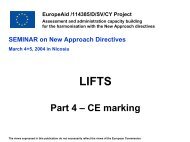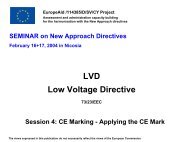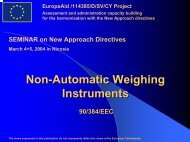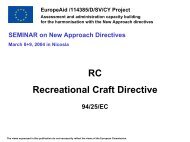Atex guidelines
Atex guidelines
Atex guidelines
You also want an ePaper? Increase the reach of your titles
YUMPU automatically turns print PDFs into web optimized ePapers that Google loves.
-18-These considerations lead to the following table:Table 2: When is directive 94/9/EC applicable?Situation Analysis ResultEquipment with ownpotential source ofignitionEquipment to be usedin or in relation topotentially explosiveatmospheresEquipment where anintended internalexplosiveatmosphere ispresentEquipment withinscope of directive94/9/ECA YES YES YES YESB NO YES YES NO a)b)C YES NO YES NO a)b)D YES YES NO YESE NO NO YES NO a)b)F YES NO NO NO b)G NO YES NO NO b)H NO NO NO NO b)a)b)but YES for products inside the internal potentially explosive atmosphere. Moreover it hasto be considered that the equipment as a whole has to be capable of functioning inconformity with the operational parameters established by the manufacturer and ensuring therequired level of protection according to Annex II, item 1.0.1 (Principles of integratedexplosion safety). Also YES for non-electrical (mechanical) equipment where an intendedexplosive atmosphere is inside the equipment (e.g. fans, ventilators, blowers or compressorsproviding ignitable mixtures) and a potential source of ignition has to be assumed.but YES for devices according to Article 1.2 of the directive, see below.b) Protective systemFrom its intended function it is obvious that a protective system will always, at least partially, beinstalled and used in a potentially explosive atmosphere.Because a protective system has the function to eliminate or reduce the dangerous effects of anexplosion (a safety function) it is subject to the directive regardless as to whether it has its ownpotential source of ignition or not. In this first case it would have to comply with the specific EHSRsfor equipment as well.According to Article 1.3.(b) protective systems are placed on the market separately for use asautonomous systems 30 . Consequently their conformity with the relevant EHSRs of Annex II has to beassessed according to Article 8(2) and they have to be marked according to Article 10(2).Of course ‘protective systems’ may also be placed on the market as an integral part of equipment.Technically speaking these remain ‘protective systems’ because of their function, but are notconsidered as protective systems in the sense of the directive regarding conformity assessment andmarking. In such cases their conformity is assessed in the course of the conformity assessment of theequipment they are integrated into, using the procedures foreseen in Article 8 according to the Groupand Category of that equipment. They are not separately marked.It is, however, important to note that the specific EHSRs of Annex II.3 also apply for integrated‘protective systems’.30 See Corrigenda to the English language version of directive 94/9/EC (OJ L 21,26.1.2000).


